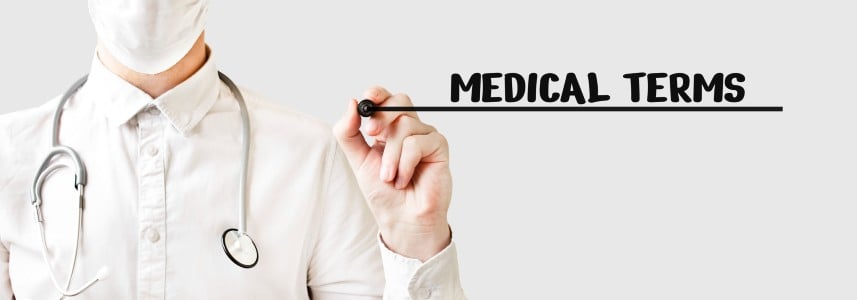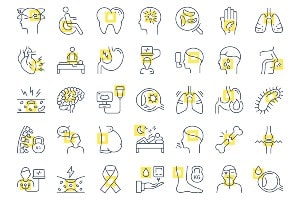About Cleidocranial Dysostosis (Cleidocranial Dysplasia)

Learn about the disease, illness and/or condition Cleidocranial Dysostosis (Cleidocranial Dysplasia) including: symptoms, causes, treatments, contraindications and conditions at ClusterMed.info.
Cleidocranial Dysostosis (Cleidocranial Dysplasia)

| Cleidocranial Dysostosis (Cleidocranial Dysplasia) |
|---|
Cleidocranial Dysostosis (Cleidocranial Dysplasia) InformationHow common is cleidocranial dysplasia?Cleidocranial dysplasia occurs in approximately 1 per million individuals worldwide. How do people inherit cleidocranial dysplasia?This condition is inherited in an autosomal dominant pattern, which means one copy of the altered gene in each cell is sufficient to cause the disorder. In some cases, an affected person inherits the mutation from one affected parent. Other cases may result from new mutations in the gene. These cases occur in people with no history of the disorder in their family. What are the symptoms and signs of cleidocranial dysplasia?Signs and symptoms of cleidocranial dysplasia can vary widely in severity, even within the same family. Individuals with cleidocranial dysplasia usually have underdeveloped or absent collarbones (clavicles). As a result, their shoulders are narrow and sloping, can be brought unusually close together in front of the body, and in some cases the shoulders can be made to meet in the middle of the body. Delayed closing of the spaces between the bones of the skull (fontanels) is also characteristic of this condition. The fontanels usually close in early childhood, but may remain open into adulthood in people with this disorder. Affected individuals may be 3 to 6 inches shorter than other members of their family, and may have:
What genes are related to cleidocranial dysplasia?The RUNX2 gene provides instructions for making a protein that is involved in bone and cartilage development and maintenance. This protein is a transcription factor, which means it attaches (binds) to specific regions of DNA and helps control the activity of particular genes. Researchers believe that the RUNX2 protein acts as a "master switch," regulating a number of other genes involved in the development of cells that build bones (osteoblasts). Some mutations change one protein building block (amino acid) in the RUNX2 protein. Other mutations introduce a premature stop signal that results in an abnormally short protein. Occasionally, the entire gene is missing. These genetic changes reduce or eliminate the activity of the protein produced from one copy of the RUNX2 gene in each cell, decreasing the total amount of functional RUNX2 protein. This shortage of functional RUNX2 protein interferes with normal bone and cartilage development, resulting in the signs and symptoms of cleidocranial dysplasia. In rare cases, affected individuals may experience additional, unusual symptoms resulting from the loss of other genes near RUNX2. In about one-third of individuals with cleidocranial dysplasia, no mutation in the RUNX2 gene has been found. The cause of the condition in these individuals is unknown. What is cleidocranial dysplasia?Cleidocranial dysplasia is a condition that primarily affects the development of the bones and teeth. What other names do people use for cleidocranial dysplasia?
Where can I find information about treatment for cleidocranial dysplasia?These resources address the management of cleidocranial dysplasia and may include treatment providers.
|
More Diseases
A | B | C | D | E | F | G | H | I | J | K | L | M | N | O | P | Q | R | S | T | U | V | W | X | Y | Z
Diseases & Illnesses Definitions Of The Day
- Noncancerous Colloid Thyroid Nodule (Thyroid Nodules) ‐ How are thyroid nodules diagnosed?, Introduction to thyroid nodules …
- Skin, Laser Resurfacing (Laser Resurfacing) ‐ CO2 Laser Resurfacing, Complications of Laser Skin Resurfacing …
- Malignant Fibrous Histiocytoma (Bone Cancer Overview) ‐ Are there any treatments or medications that relieve bone cancer pain? …
- Double Vision ‐ Is it possible to prevent double vision?, What are the symptoms and signs of double vision? …
- Ageusia (Taste Disorders) ‐ Are taste disorders serious?, Can taste disorders be treated? …
- Autism Screening and Diagnosis ‐
- Alpha-fetoprotein Blood Test ‐ In which situations are high blood (serum) levels of AFP used as a tumor marker? …
- Polymyalgia Rheumatica ‐ How do health care professionals make a diagnosis of polymyalgia rheumatica? …
- Stump Appendicitis (Appendicitis) ‐ Appendicitis definition and facts, Are there long-term consequences of appendectomy? …
- Gonorrhea (Gonorrhea In Women) ‐ Gonorrhea facts, How is gonorrhea diagnosed?, What are sexually transmitted diseases (STDs)? …